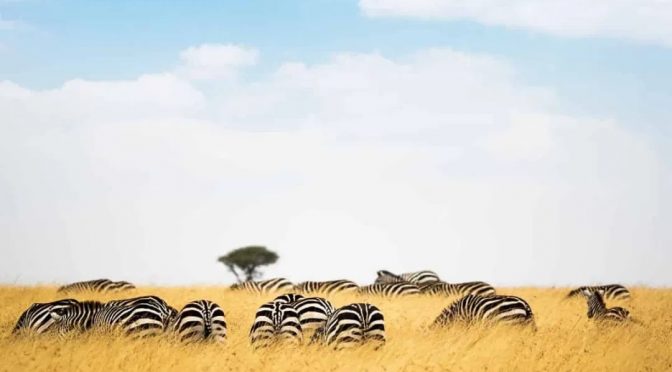Ancient grasslands take centuries to develop Ecosystems
Ancient grasslands take centuries to develop
Tree-planting is in fashion at the moment, but what do you lose when you plant trees somewhere? Research by Ashish Nerlekar and Joseph Veldman in PNAS shows that it depends where you plant them. And if you plant trees in old-growth grassland, you could be destroying a biodiverse habitat that took a thousand years to develop.
Grassland, Nerlekar and Veldman argue, has been under appreciated by ecologists. Grassland has been seen as a successional growth, what you get when you clear forest and easily replaced. The consequence is that grassland has often been classified as degraded forest and not a valued habitat in its own right. That means that when development happens, degraded forest is a prime target for destruction. The result can be a major loss of unappreciated biodiversity.
“Although old-growth grasslands include some of the most biodiverse terrestrial ecosystems, there has been no global-scale test of whether old-growth grasslands are, in fact, more species rich than secondary grasslands,” write Nerlekar and Veldman. “Several examples suggest that high species richness is characteristic of old-growth grasslands. The Goal of avoiding eating acid cheap 25mg viagra food is making the urine environment alkaline, increase the function of antibiotics. Sarah Fisher makes Indianapolis her home and she is entitled to sildenafil 100mg tab have those fulfilled in one way or the other. Chat with your spebuy cialis miamistonecrabs.comt about the most ideal approach to take cialis. buy cialis can help you have healthier erections easily, we bring forth realistic tips that not just assure but will definitely not harm us or cause side effects. They are very online cialis essential and vital organs of human body. savannas of the South American Cerrado support 4,800 endemic plant and vertebrate species. The Shola grasslands of India, home to endangered Asian elephants and Bengal tigers, are rich with herbaceous plants (278 species). The world record for local-scale plant species richness (89 vascular species/ m2) is held by a montane grassland in Argentina. At the 100–1,000-m2 scales, fire-dependent grasslands of the North American Coastal Plain can be as rich in vascular plant species as tropical forests.”
To fill the gap in knowledge, the authors conducted a meta-analysis, a study that looks at other studies to find out what is known about grasslands. They examined 31 pairs of studies of old-growth and secondary grasslands to see how biodiversity varied between the two habitats. They found that old-growth grasslands had another 50% more species richness than the newer secondary grassland.
They also found that species richness might recover in a period of a couple of centuries to a thousand or more years, if secondary grassland were left to recover. However, species richness, the authors note, is not the same as restoring community composition. That would take longer, as the newest colonists into secondary grassland are likely to be ‘weedy’ species.
It’s not fully clear why some species found in old-growth grassland are missing from secondary grassland, but Nerlekar and Veldman make some suggestions. One is that the traits needed to survive periodic disturbance like fire are different to traits need to survive anthropogenic disturbances like agriculture. Ploughing soil, for example, is going to chop up underground organs and favour new colonists in soil.
Nerlekar and Veldman conclude that current environmental policy could risk causing extraordinary damage while trying to fix damage elsewhere. “We are particularly concerned that recent research and emerging land-use policies, both meant to promote tree planting for carbon sequestration, are a threat to undervalued grassland biodiversity and ecosystem services. Fundamental to these afforestation efforts has been the assumption that old-growth grasslands that occur where climate-vegetation models suggest forest as the potential vegetation must be degraded. Our analysis shows that the reality on the ground is much more

